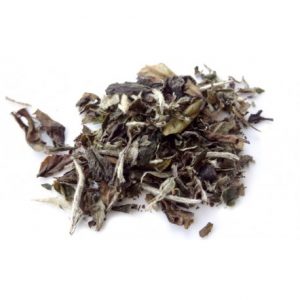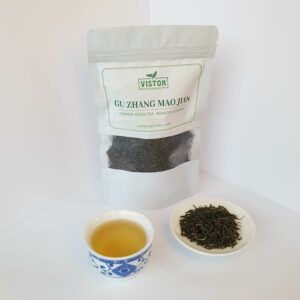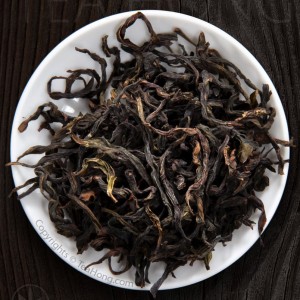Song Cultivar Huangzhi Xiang Dancong
What is a Dancong?
Dancong — literally “single bush” — is traditionally the way to process the leaves from one single tea bush so as to retain the unique finesse in taste and aroma capable only by the harvest of that bush. This practice has been kept only for bushes of notable differences. It is a tradition in the shuixian regions of Wuyi and Fenghuang ( Phoenix ) but the term has become a proper noun for finer Phoenix shuixian oolongs. We have briefly described the process here: Traditional Oolong Production
We shall go into detail of a particular dancong in this article: Song Cultivar Huangzhi Xiang Dancong 宋種黃枝香單欉
It is a most traditional form of oolong produced from a very, very old cultivar. It is the oldest even amongst its peers in Phoenix, in terms of the cultivar and production style.
A genuine traditional style Huangzhi Xiang is somewhere between a sweeter modern classic style Phoenix oolong and a bouquet style one. It has a very special taste profile that can be well brought out through normal and gongfu infusion approaches.
About the name Huangzhi Xiang
Let’s also go over the name here a bit:
Huangzhi Xiang (translate: the fragrance of kumquat) is the oldest name in tea cultivar in the Phoenix oolong region. Those who know Chinese may not quite easily make out what Huangzhi really is in the language. Some mistaken it for “yellow stalk”, referring to the yellowish leaf stalks. Huangzhi ( 黃橘, which later deteriorated as 黃枝, and has thus become so popular that the original term seems like a typo when you use it ) is actually a local mispronunciation of the Mandarin characters for the local term for kumquat ( transliteration in Mandarin: huang-ju ). A kumquat is a small citrus fruit that looks like a tiny smooth skin oblong orange which people here eat with the skin on, when it is properly ripen. It tastes sweet with unexpectedly low level of astringency that one would associate with the orange hind. The aftertaste is pleasant, thirst quenching and very refreshing.
The tea is named after the fruit for a good reason — both the aroma and taste have that kind of accents, even hinting the smell of the fruit’s flower and touches of honey.
I am describing only the genuine quality here. The market is flooded with products of the same name but not the same thing.
Let’s come back to the name.
“Dancong”, as explained in the beginning of this article, means the leaves from each single tea bush is separately processed to maintain the clarity and distinctiveness of the taste from that tree. This is the anti-thesis of mass produced tea from evenly trimmed tea hedges in tea plantations. Tea trees here are left to grown large, with space. One of my clients called these “free-range tea trees”.
Song Dynasty
“Song” cultivar refers to the tea tree cultivar that has been propagated from a living ( and producing ) tea tree carbon dated back to Southern Song Dynasty, in the 13th century. Another cultivar that can be dated back to the same era is the Song Cultivar Zhilan Xiang Dancong 宋種芝蘭香單樅, a typical representation of the bouquet style Phoenix. These are living proofs of the history of oolong production in the region.
There are a large number of very old bushes and trees in the region, each claimed by their owners as a few or a hundred years old, and each produces a different variety of Fenghuang ( Phoenix ) Dancong. Both the appearance of the plant and the taste profile of the harvest are different from one another. Farmers here do aggressively propagate these different cultivars asexually and in the immediate vicinity of the mother tree.
Single Bush Cultivars
An official account by the local government concludes 123 special cultivars. Huang Bozi, a forerunner in Phoenix oolong studies groups them into 18 distinctive groups. We shall write more about that later.
Many ‘children’ of the multi-centurian old plants are themselves over a hundred years old. In late April / early May, people from around the country drive up the winding narrow road to wait for the harvests to be able to buy them immediately. Some are end-users who are crazy about getting the real thing and are willing to pay hundreds of thousand ( CNY ) for a single tree’s few kilos of output. The majority of the crowd are wholesalers and teashop owners all competing in price to get the leaves from these famous bushes. Most do not realise that there are cheating farmers collecting green leaves from all neighbouring villages to process in place of the genuine one.
Genuine Quality

Song Cultivar Huangzhi Xiang Dancong, Phoenix oolong 鳳凰宋種黃枝香 (黃橘香) 單欉
This variety used to be the most popular and acclaimed of all classic style Phoenix dancings. Yet most producers now process it to the bouquet finish to highlight its kumquat accents in the taste profile. The best ones are those with a border line classic-bouquet finish, which is difficult to obtain.
20606 | 8936
Genuine Song Cultivar Huangzhi Xiang Dancong is rare and sometimes I do feel guilty to indulge myself in such special gastronomy.
I have compared batches both directly from the real old bush and from propagates of it. To me, well processed ones from well-tended and matured off-springs are superior in taste. Most certainly the fame is not as respectable as the multi-thousand a kilo originals, but to me it is the taste quality that matters.
Besides notes of kumquat, the predominant taste and aroma of a fine selection is typical of a high altitude dancong — floral, complex and tantalising aroma with a smooth body of great depth delivered in tinkling silky tactility. The interplay of the bitter-sweetness of many notes of fruits with the woodsy depth of a slow baked oolong is mesmerizing. Then there is the quenching, enduring sweet after taste that make each sip of this oolong a love affair.
Buying tips
There may be around thirty to forty tea wholesale markets in China where most of the shops can sell you a quarter of a kilo of anything at “wholesale” price. I have entered many to sample their stuff and amazing disappointment of quality has almost always been the experience. Price most certainly is not an indicator of authenticity. The more foreign I appear, the more so the case. I am not sure how many of these shops really believe in what they are selling, or they are victims of deceits themselves. Mind you that many of these operators ARE from Fenghuang. Then again, not all from Beijing really read Karl Marx.
It has taken me as a specialist a number of years to know the quality and the tricks, so if you are not buying a tree of it, I advise you rely on a reputable and knowledgeable dealer. Venturing into those “wholesale” markets or Alibaba whatever will only give you an “educational” experience.














Is this tea the same as song zhong zhilan xiang. A friend recently just brought back an extremely fine, and high quality zhilan xiang. But this is my first time having that tea, just wondering if the brewing paremeters are the same as huangzhixiang. Also price and tasting notes would be great! Also can this be matured? Thank you!
Zhilan Xiang is a bouquet style dancong with various quality levels. Unlike Huangzhi Xiang and Song Cultivar Huangzhi Xiang, Zhilan Xiang does not mature. Most in the market do not keep well into the 3rd year.
If it is a good quality one, do use it up as soon as you please.
Depending on the quality, Zhilan Xiang is generally better in the gongfu style than in the conventional styles. That means higher temperature, more leaves and shorter infusion time.
A common processing mistake in this tea is the shortened drying time. This renders a not so fresh, and sometimes grassy taste in the tea after a little storage. If that happens, use a home-use tea baking oven to revitalise the aroma. In Taiwan, such home appliance is called a 提香機 — aroma re-invigorator.